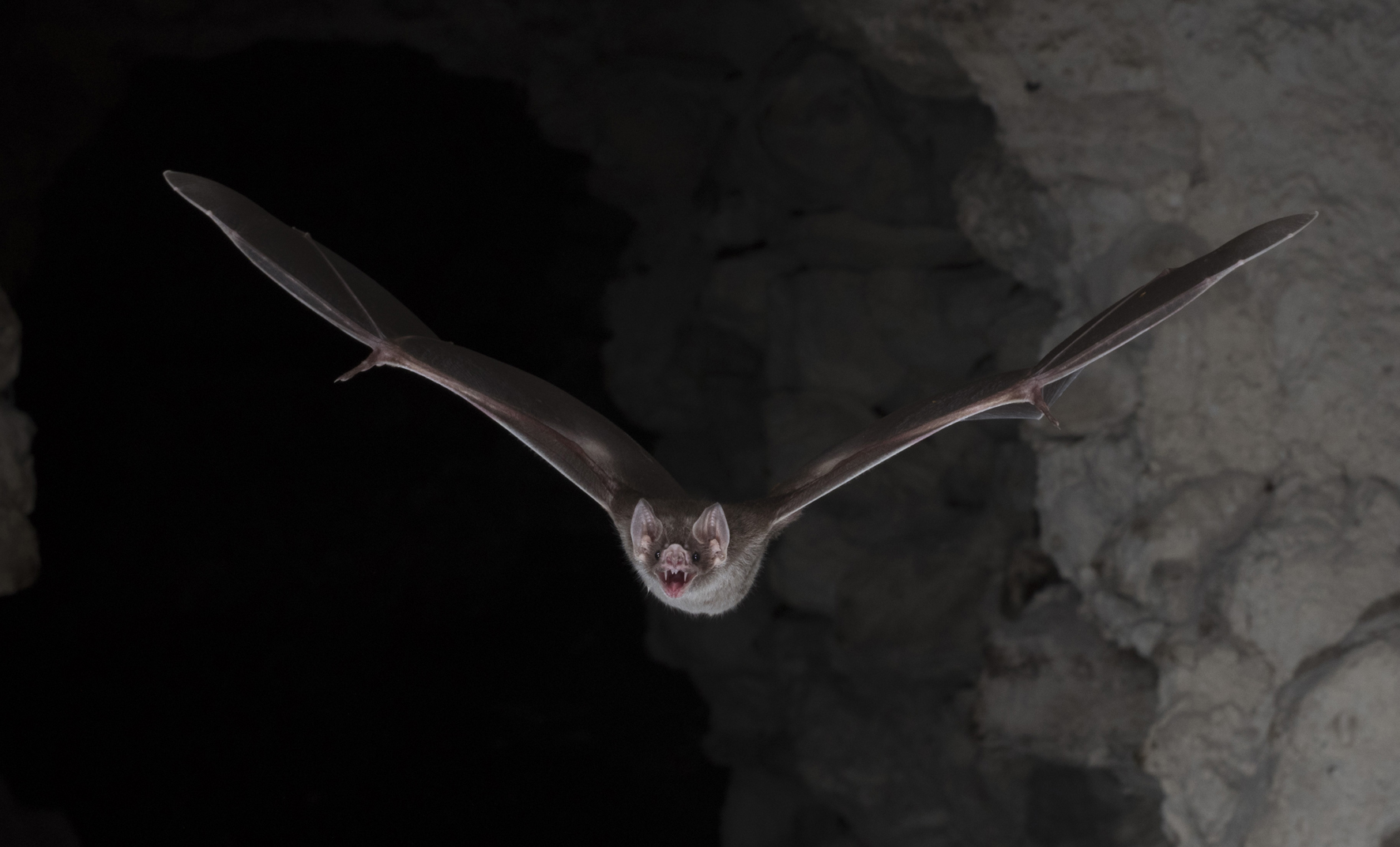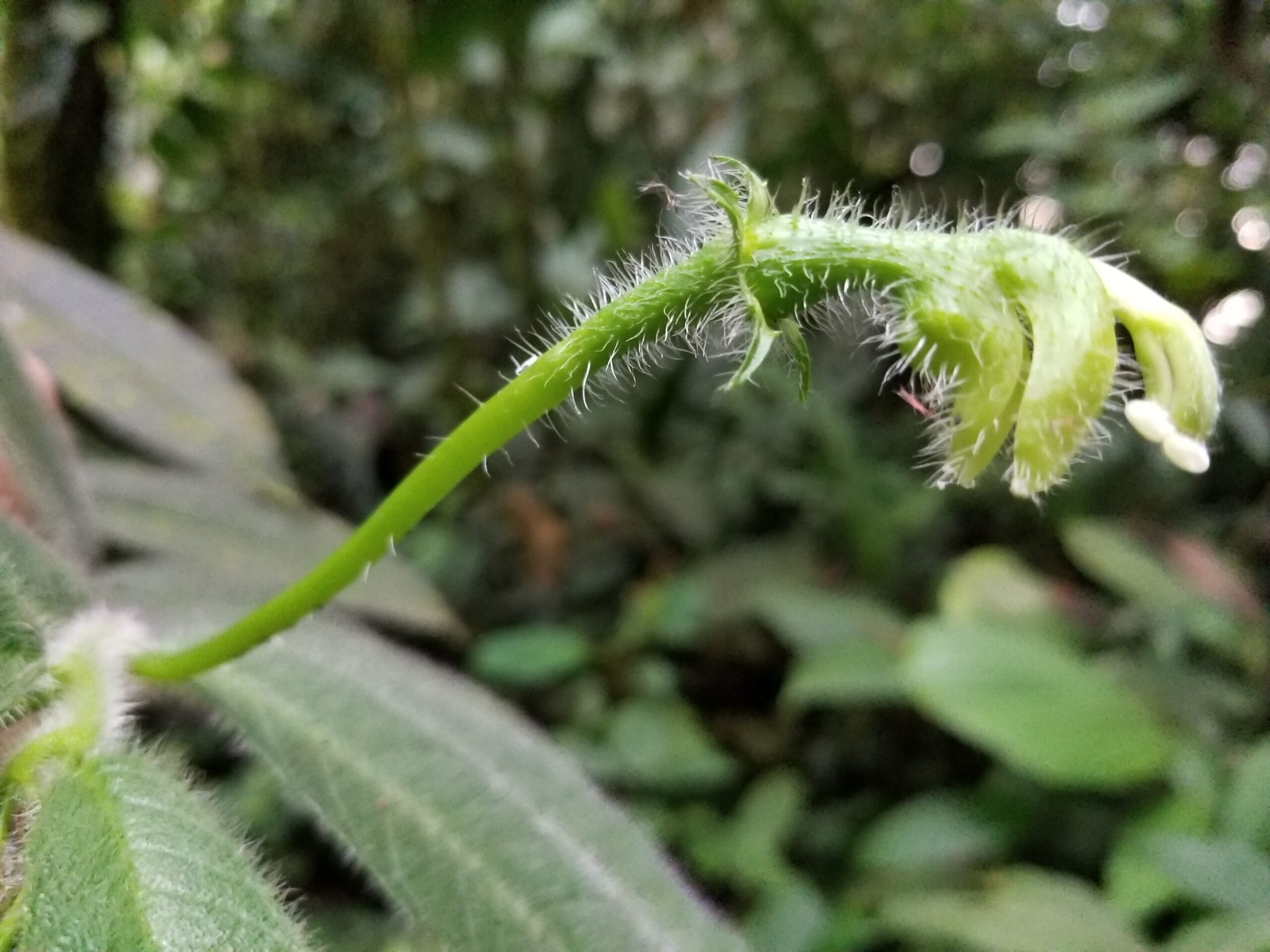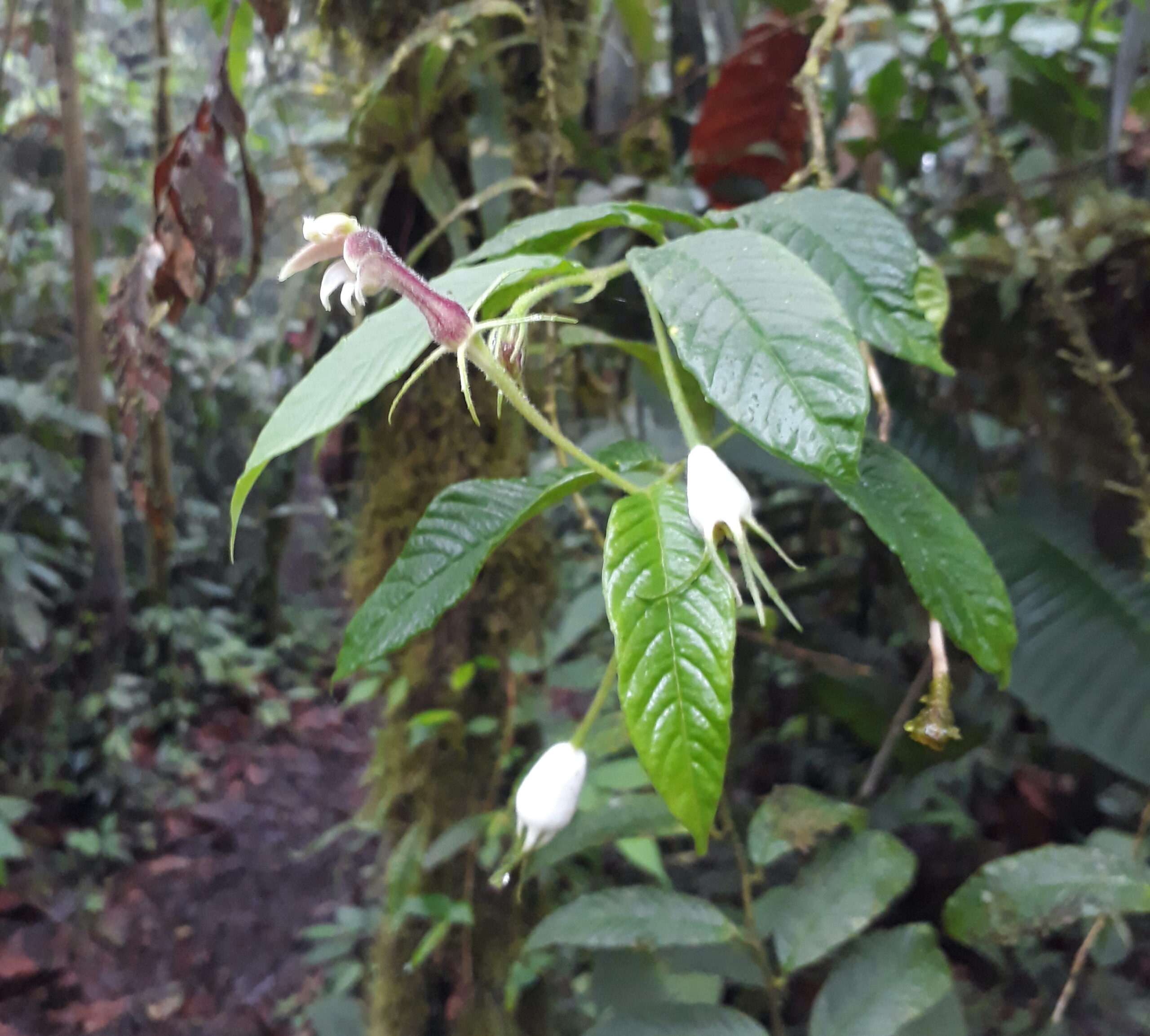Halloween and bats are forever connected. Why? Three species out of roughly 1,300 feed primarily on blood – “vampire” bats. The vast majority of bat species feed on insects, rodents, and nectar. We don’t want to add to the fear factor of this Halloween holiday. There are plenty of people who are better at this. We feel closer to the mystery and magical aspects of our favorite eerie holiday.

Vampire bat (Image: Brock Fenton)
Recently visiting researchers together with resident biologists of Mashpi Lodge in Ecuador identified two endemic bell-shaped flowers in the hotel’s vast reserve. The odd blooms struck the scientists as unusual. They lacked two vital characteristics to attract common pollinators: bright colors and strong smells.

Burmeistera catulum (Image: Mateo Roldan)

Burmeistera velutina (Image: Mateo Roldan)
The plants belong to the Campanulaceae family (bell-shaped flowers), are endemic to Mashpi Reserve, and are an example of the intricate — dare we call it magic? — and complex ecosystem of this cloud forest. Why do these plants not “waste” energy and resources on showy and fragrant flowers but rather use energy to form greenish-white flowers fully covered by hairs and with a unique smell? You guessed it. Bats!
Bats use echolocation to move, fly and locate food and shelter. The hairs on the flower and stem allow these flowers to be “visible” to the bats, thus making the sound bounce back towards them. The pollinators of the discovered flower are nectarivorous bats.

Burmeistera catulum (Image: Mateo Roldan)

Burmeistera velutina (Image: Mateo Roldan)
Given that both species are considered “critically endangered” (according to IUCN criteria), it’s vital to support the regeneration of both the bat and flower species. The goal of Mashpi Lodge and Reserve is to bolster the importance of research and enrich our knowledge of the lodge’s surrounding ecosystem. Research like this helps us to see beyond, read between the lines, and understand the importance of knowing and describing new species. Our broad understanding supports a deeper grasp of interdependence in the ecosystem. This knowledge is then shared with local communities, guests, and the world at large, all with the aim of underlining the importance of conserving this fragile and fascinating bio-region.

Mashpi Lodge and Reserve